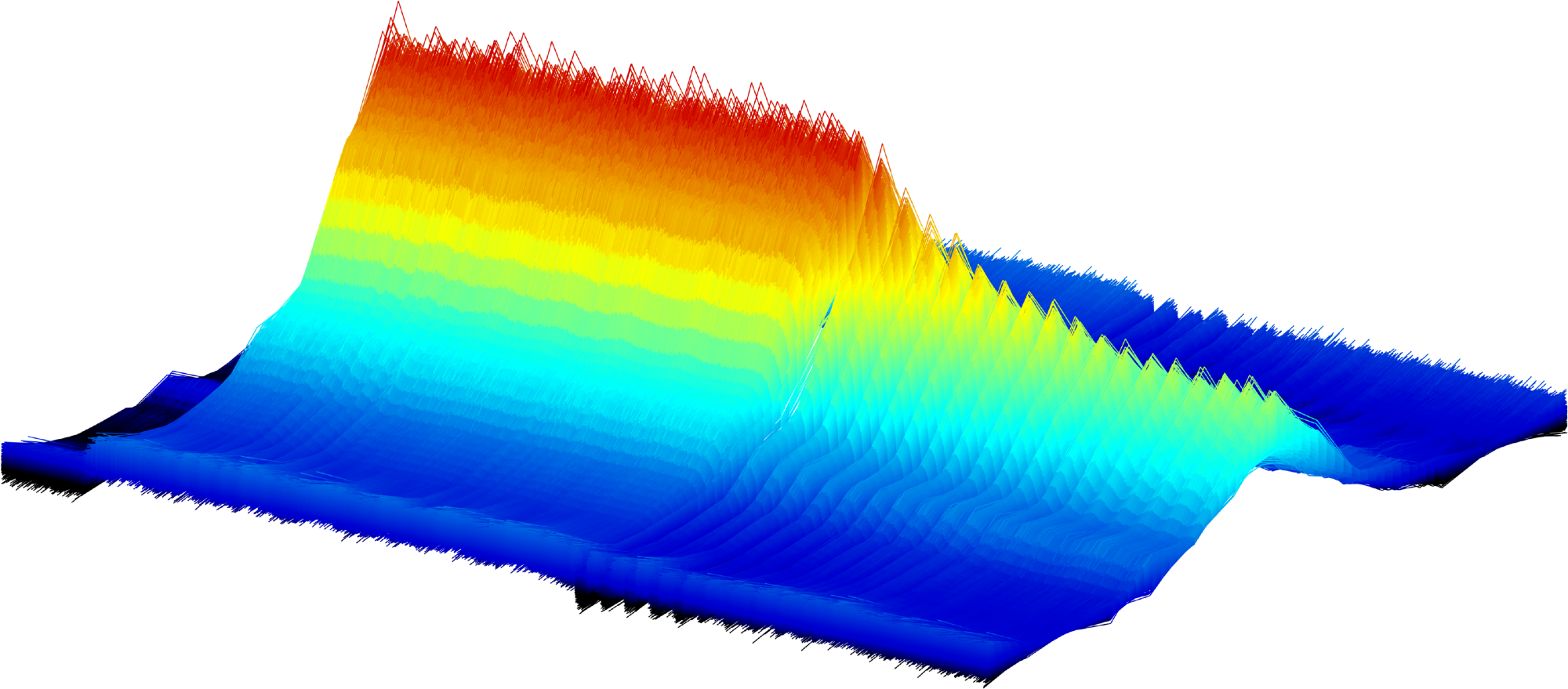From detecting COVID in breath to monitoring greenhouse gas concentrations, laser technologies known as frequency combs can identify particular molecules as simple as carbon dioxide and as complex as monoclonal antibodies with unparalleled accuracy and sensitivity. Despite their incredible capabilities, frequency combs have been limited in their ability to capture high-speed processes such as hypersonic propulsion or protein folding into their final three-dimensional structures.

A new frequency comb setup can capture the moment-by-moment details of carbon dioxide gas escaping from a nozzle at supersonic speeds in an air-filled chamber, followed by rapid oscillations of gas due to complex aerodynamics within the chamber. The data plot shows the absorbance of light (vertical) over time (horizontal left to right) across a range of frequencies (horizontal forward to back). Image Credit: G. Mathews/University of Colorado Boulder
The National Institute of Standards and Technology (NIST), Toptica Photonics AG, and the University of Colorado Boulder have now built a frequency comb system that can identify the presence of certain molecules in a sample every 20 nanoseconds, or billionths of a second.
Researchers may be able to employ frequency combs to better comprehend the split-second intermediate steps in fast-moving processes that range from the mechanics of hypersonic jet engines to the chemical reactions between enzymes that regulate cell growth using this new capability. The findings were published in Nature Photonics by the research team.
The researchers employed the now-common dual-frequency comb arrangement in their experiment, which consists of two laser beams that work together to detect the spectrum of colors that a molecule absorbs. The majority of dual-frequency comb configurations use two femtosecond lasers that send out a pair of ultrafast pulses in lockstep.
In this new experiment, the researchers employed a simpler and less expensive device known as “electro-optic combs,” which divides a single continuous beam of light into two beams. The light beams are then altered by an electronic modulator, which creates electric fields that shape them into the individual “teeth” of a frequency comb. Each tooth represents a different color or frequency of light that can be absorbed by a molecule of interest.
During a typical trial run, the electro-optic comb used by the researchers contained only 14 teeth, compared to thousands or even millions in traditional frequency combs. The researchers were able to detect variations in light absorption at the 20-nanosecond time scale, though, since each tooth had a lot higher optical power and was spaced out from the others in frequency.
Using a tiny nozzle in an air-filled cylinder, the researchers measured supersonic CO2 pulses as they emerged for their demonstration. The amount of carbon dioxide in the air was measured, or the CO2 mixing ratio. Researchers were able to determine the motion of the pulse by observing changes in CO2 concentration.
The scientists observed the way the CO2 reacted with the atmosphere, causing variations in air pressure to follow. Even with the most advanced computer simulations, it is frequently difficult to precisely extract such details.
In a more complicated system like an aircraft engine, we could use this approach to look at a particular species of interest, such as water or fuel or CO2, to observe the chemistry. We can also use this approach to measure things such as pressure, temperature or velocity by looking at changes in the signal.
David Long, Research Chemist, National Institute of Standards and Technology
The data gathered from these studies could shed light on how to better understand how greenhouse gases interact with the climate or lead to the design of combustion engines.
An optical parametric oscillator was employed in the setup to shift the comb teeth from near-infrared to mid-infrared colors absorbed by CO2. However, the optical parametric oscillator can be set to various portions of the mid-infrared spectrum, allowing the combs to detect different substances that absorb light in those regions.
The study contains information that other researchers can utilize to develop a similar system in the lab, making this new technology publicly available across a wide range of research fields and industries.
What is truly special about this work is that it substantially lowers the barrier to entry for researchers who would like to use frequency combs to study fast processes.
Greg Rieker, Study Co-Author and Professor, University of Colorado Boulder
Long noted, “With this setup, you can generate any comb you want. The tunability, flexibility and speed of this method open the door to lots of different types of measurements.”
The study was funded in part by the Air Force Office of Scientific Research.
Journal Reference
Long, D. A., et al. (2023) Nanosecond time-resolved dual-comb absorption spectroscopy. Nature Photonics. doi:10.1038/s41566-023-01316-8